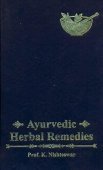Arshoghna, Arśoghna, Arshas-ghna: 9 definitions
Introduction:
Arshoghna means something in Hinduism, Sanskrit, biology. If you want to know the exact meaning, history, etymology or English translation of this term then check out the descriptions on this page. Add your comment or reference to a book if you want to contribute to this summary article.
The Sanskrit term Arśoghna can be transliterated into English as Arsoghna or Arshoghna, using the IAST transliteration scheme (?).
In Hinduism
Ayurveda (science of life)
Source: gurumukhi.ru: Ayurveda glossary of termsArśoghna (अर्शोघ्न):—Antihaemorrhoidals; drugs useful in treatment of piles;

Āyurveda (आयुर्वेद, ayurveda) is a branch of Indian science dealing with medicine, herbalism, taxology, anatomy, surgery, alchemy and related topics. Traditional practice of Āyurveda in ancient India dates back to at least the first millenium BC. Literature is commonly written in Sanskrit using various poetic metres.
Biology (plants and animals)
Source: Wisdom Library: Local Names of Plants and DrugsArshoghna in the Sanskrit language is the name of a plant identified with Amorphophallus paeoniifolius (Dennst.) Nicolson from the Araceae (Arum) family having the following synonyms: Amorphophallus campanulatus. For the possible medicinal usage of arshoghna, you can check this page for potential sources and references, although be aware that any some or none of the side-effects may not be mentioned here, wether they be harmful or beneficial to health.
Arsoghna in the Sanskrit language, ibid. previous identification.
Source: Google Books: CRC World Dictionary (Regional names)Arshoghna in India is the name of a plant defined with Amorphophallus paeoniifolius in various botanical sources. This page contains potential references in Ayurveda, modern medicine, and other folk traditions or local practices It has the synonym Dracontium polyphyllum G. Forst. (among others).
Example references for further research on medicinal uses or toxicity (see latin names for full list):
· Memoirs of the College of Agriculture, National Taiwan University (1991)
· Gardener’s chronicle (1885)
· Kew Bulletin (1985)
· Cytologia (1988)
· Genera Aroidearum exposita (1858)
· Research Bulletin (1970)
If you are looking for specific details regarding Arshoghna, for example chemical composition, pregnancy safety, side effects, diet and recipes, extract dosage, health benefits, have a look at these references.

This sections includes definitions from the five kingdoms of living things: Animals, Plants, Fungi, Protists and Monera. It will include both the official binomial nomenclature (scientific names usually in Latin) as well as regional spellings and variants.
Languages of India and abroad
Sanskrit dictionary
Source: DDSA: The practical Sanskrit-English dictionaryArśoghna (अर्शोघ्न).—a. destroying piles. (-ghnaḥ) 1 Name of the plant शुरण (śuraṇa) (Mar. suraṇa), so called because it is said to cure piles.
2) one part of buttermilk with three parts of water. (-ghnī) 1 Name of the plant Curculigo Archioides Lin. (Mar. devaḍaṃgarī).
2) the marking nut plant (bhallātaka).
Arśoghna is a Sanskrit compound consisting of the terms arśas and ghna (घ्न).
Source: Cologne Digital Sanskrit Dictionaries: Shabda-Sagara Sanskrit-English DictionaryArśoghna (अर्शोघ्न).—mfn.
(-ghnaḥ-ghnā-ghnaṃ) Destroying the hœmorrhoids. m.
(-ghnaḥ) An esculent root, (Arum campanulatum.) f. (-ghnī) A plant, (Curculigo orchioides.) E. arśas, and ghna what destroys, from hana to kill.
Source: Cologne Digital Sanskrit Dictionaries: Yates Sanskrit-English DictionaryArśoghna (अर्शोघ्न):—[arśo-ghna] (ghnaḥ) 1. m. An esculent root. ghnī 3. f. (Curculigo orchioides).
[Sanskrit to German]
Sanskrit, also spelled संस्कृतम् (saṃskṛtam), is an ancient language of India commonly seen as the grandmother of the Indo-European language family (even English!). Closely allied with Prakrit and Pali, Sanskrit is more exhaustive in both grammar and terms and has the most extensive collection of literature in the world, greatly surpassing its sister-languages Greek and Latin.
Kannada-English dictionary
Source: Alar: Kannada-English corpusArśōghna (ಅರ್ಶೋಘ್ನ):—
1) [noun] that which cures piles.
2) [noun] the edible, starchy, tuberous root of the plant Amorphophallus campanulatum of Araceae family; elephant yam used in treating for piles.
Kannada is a Dravidian language (as opposed to the Indo-European language family) mainly spoken in the southwestern region of India.
See also (Relevant definitions)
Partial matches: Arsho, Arshas, Ghna.
Starts with: Arshoghnavalkala.
Full-text: Ghna.
Relevant text
Search found 1 books and stories containing Arshoghna, Arśoghna, Arshas-ghna, Arśas-ghna, Arsas-ghna, Arsoghna, Arsho-ghna, Arśo-ghna, Arso-ghna, Arśōghna; (plurals include: Arshoghnas, Arśoghnas, ghnas, Arsoghnas, Arśōghnas). You can also click to the full overview containing English textual excerpts. Below are direct links for the most relevant articles:
Related products
